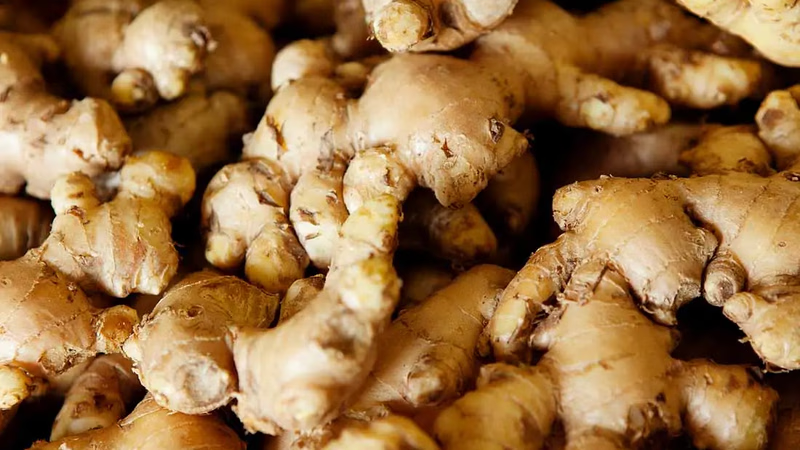
Ginger: A key spice in Middle East trade markets.
Ginger, as one of the most popular and popular spices, has an important position and rank in the global spice trade market. The global ginger market (fresh and dry ginger) has grown significantly in recent years. India, Nigeria, China and Thailand are among the countries that produce ginger on a large scale. These countries provide high-quality ginger production in significant quantities. Ginger has a strong demand from consumers all over the world due to its flavoring, aromatic and health properties. Ginger is used as a popular spice in the food industry and is also used in the preparation of beverages, baking products, confectionery and nutritional supplements. Considering the increasing consumption of ginger in various industries and the ever-increasing demand of consumers, the global ginger market has the potential to grow and develop more in the future. Studies show that ginger will be noticed as a health product and spice and the demand for it will increase.
Due to the increasing demand, the global ginger market has grown significantly in recent years. Increasing consumer awareness about the health properties and taste of ginger, its widespread use in the food industry, and the improvement of international trade and transportation infrastructure could have contributed to the growth of this market. Limitations such as the impact of climate change on productivity, diseases and pests may be some of the challenges of the ginger market. Also, trade regulations, export and import restrictions, exchange rates and economic conditions can also have an impact. India is one of the largest exporters of ginger in the world. In addition to India, countries such as Thailand, China, Nepal and Brazil also have significant ginger exports. In some countries, the domestic consumption of ginger is also high and imports are also made.
The price of ginger in the world market is affected by several factors. Factors such as supply and demand, weather conditions, cultivation conditions, exchange rates and trade regulations are influential. Changes in the price of ginger usually occur throughout the year. Ginger is one of the most important and popular spices in the world market and has an important place in the spice trade. This rank and position has been achieved due to the properties of ginger, its wide uses and strong demand from consumers. Ginger is widely used as a popular spice in food and cooking industries. The excellent taste and aroma of ginger and its health properties have made it one of the most popular spices in the preparation of foods and drinks. India, Nigeria, China and Thailand are among the largest producers of ginger in the world. These countries provide high-quality ginger production in significant quantities. As mentioned, India is known as the largest exporter of ginger in the world.
Ginger is used in many food industries such as beverages, baking products, confectionery, meat products, food supplements, juices and preserves. This multiplicity of uses of ginger plays an important role in its position in the spice business. Ginger has many health properties, including anti-inflammatory, antiseptic, anti-nausea, strengthening the body's immune system and improving digestive function. These health properties of ginger increase its demand and strengthen its position in the spice business. Ginger is used as a natural additive in the production of beverages such as juices, soft drinks, energy drinks and teas. Adding ginger to drinks can improve their taste and aroma and increase their health properties.
Ginger is used as a popular spice in the preparation of sweets and cakes. This spice can add more depth and variety to the taste and aroma of sweets and make them stand out. Ginger is used as a main spice in sauces, dressings, marinades and fermented grains such as bread and biscuits. This spice can add more depth and flavor to foods and make them more diverse and delicious. Ginger is used as an additive in the preparation of meat products such as sausages and sausages. This spice can add more depth and variety to the flavor and aroma of meats and improve them. Ginger is used in the preparation of sweet products such as chocolate, ice cream and candies. Adding ginger to these products can give them a unique flavor and aroma and improve the consumption experience.
Some countries may have special restrictions and regulations for the export and import of ginger. These restrictions can include quantitative restrictions, import/export licensing, sanitary and phytosanitary restrictions, and other international trade regulations. Therefore, before starting to trade ginger, it is important to check the relevant laws and regulations in the country of destination or source of ginger. In many cases, there are certain quality standards for the export and import of ginger. These standards can include restrictions on the moisture level, size, shape, color and appearance integrity of ginger. In addition, health standards may also be among the standards required for the import and export of ginger. Labeling and packaging rules are also important in the international trade of ginger. The packaging should be such that the ginger is protected and not damaged during transportation. Also, the labels should contain the necessary information about the content, weight, country of manufacture and other relevant information.
-

Cumin trade plays a significant role in the global spice market, with major producers including India, Nigeria, Bangladesh, China, and Thailand. India stands out as the largest exporter, while the United States, Germany, Canada, and Middle Eastern countries are key importers. The competitive landscape of cumin trade involves various marketing strategies such as advertising and quality improvement. Technological advancements in production and packaging are also influencing market dynamics. Cumin is not only valued for its culinary uses but also for its medicinal properties, making it popular in food and cosmetic industries. Its demand is driven by its flavoring capabilities and health benefits. Factors affecting cumin trade include weather conditions, pest issues, trade regulations, and global supply-demand fluctuations. Prices are subject to change based on these variables and seasonal harvests. For detailed insights into current trends and statistics in cumin trade, specialized sources like the WTO or WHO can be consulted.
-
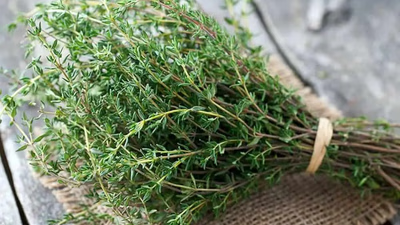
Thyme is a versatile spice with significant export potential, widely used in cooking and health products. Its antibacterial properties enhance food safety, making it valuable in the food industry. Exporting thyme requires understanding local and international regulations, identifying target markets, and establishing relationships with buyers. Key producing countries include Türkiye, China, India, and Iran, while major consumer markets are in America, Germany, France, and India. Successful thyme export involves proper product preparation, packaging for international shipping, and compliance with phytosanitary regulations. Engaging legal and financial advisors can facilitate navigating the complexities of international trade.
-
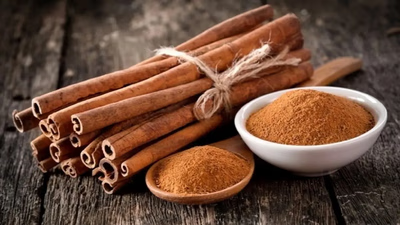
Cinnamon, a globally popular spice, is derived from the inner bark of cinnamon trees and is extensively used in various culinary applications. Major producers include Sri Lanka, China, Vietnam, Indonesia, and Madagascar, with global production estimated at 30-35 thousand tons annually. Key exporters are Indonesia, China, Vietnam, and Sri Lanka, primarily shipping to Europe (Netherlands, Germany, UK), North America (USA), and the Middle East (Saudi Arabia, UAE). Market dynamics such as quality standards, pricing, demand variations, and health regulations significantly influence cinnamon trade. Compliance with international trade laws—including customs tariffs and sanitary regulations—is crucial for successful export operations. Quality assurance standards like ISO 9001 and HACCP are essential for meeting market requirements. Additionally, sustainable practices in resource management are increasingly important in the cinnamon industry. The spice is valued not only for its flavor but also for its medicinal properties; it has antiseptic qualities and contains anti-inflammatory compounds beneficial for health.
Entering the cinnamon market requires thorough research on suppliers and target markets to establish reliable business relationships. Businesses must decide between wholesale or retail operations while ensuring high-quality products with appealing packaging. Effective marketing strategies through online platforms and trade events can enhance visibility in a competitive landscape. Continuous monitoring of market performance is vital for adapting to consumer preferences and competition.
-
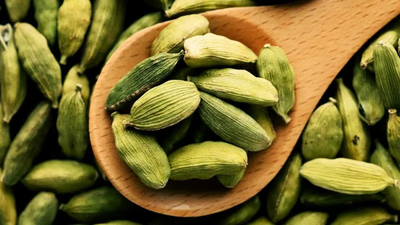
Cardamom, a highly valued spice from the ginger family, is primarily cultivated in India and Sri Lanka, with significant production in Thailand, Vietnam, and Guatemala. It is used extensively in cooking and beverages, known for its flavor and medicinal properties. The spice market sees active trade of cardamom, which can be exported in bulk or packaged. Factors influencing its price include quality, type (green or black), and geographical conditions affecting production. The demand for cardamom has surged due to its culinary versatility and health benefits. Quality control is crucial in the cardamom trade; traders must ensure high standards through careful selection based on appearance, aroma, and moisture content. Establishing reliable relationships with producers is essential for consistent supply. Effective marketing strategies are necessary for selling cardamom, utilizing online platforms and trade shows to reach customers. Proper storage and distribution practices are vital to maintain quality post-purchase.
-
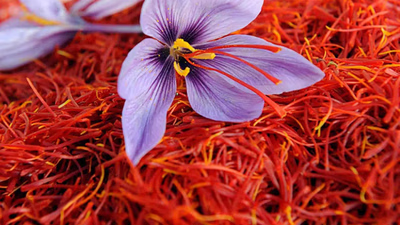
Saffron, derived from the saffron flower, is one of the world"s most expensive spices, renowned for its flavor, color, and aroma. It boasts antioxidant and anti-inflammatory properties and is primarily produced in Iran, followed by Spain, India, and other countries. The spice"s international trade is influenced by quality standards such as ISO 3632 and market demand. Countries with lower saffron production often rely on imports to meet consumption needs. Understanding market dynamics, including competitors and regulations, is crucial for successful saffron exportation. Conducting thorough research on target markets helps identify opportunities and challenges. Engaging with local experts and attending industry trade fairs can enhance market insights and networking opportunities. Proper packaging and documentation are essential for customer satisfaction and compliance with export requirements. Establishing business relationships in target countries can facilitate distribution networks while diverse marketing strategies can boost visibility.
-
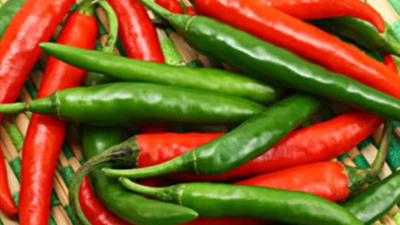
Pepper is a crucial spice in global trade, with production concentrated in countries like India, Vietnam, and Brazil. The annual global output ranges from 4-5 million tons, primarily exported to North America, Europe, Asia, and the Persian Gulf. The trade dynamics are influenced by various factors including quality standards, market demand, and consumer perceptions. Different types of pepper—black, white, red—each have unique properties and uses in the food industry. Quality assurance is vital; pepper must meet international standards for purity and packaging to ensure longevity during transport. Establishing strong relationships with producers and traders is essential for success in this competitive market. Innovations in cultivation and processing can enhance product value. Effective marketing strategies such as brand building and market analysis are necessary to navigate pricing and demand fluctuations.
Compliance with export regulations is critical to avoid legal issues. Understanding the specific needs of target markets will facilitate better trading outcomes.
-

Ginger holds a significant position in the global spice trade, with major producers including India, Nigeria, China, and Thailand. The market for ginger has expanded due to its flavoring and health benefits, leading to increased demand across various industries such as food and beverages. As a versatile spice, ginger is utilized in baking, confectionery, and nutritional supplements. The growth of the ginger market is attributed to rising consumer awareness of its health properties and improved international trade infrastructure. However, challenges such as climate change impacts on productivity and trade regulations can affect supply chains. India stands out as the largest exporter of ginger globally, while other countries like Thailand and Brazil also contribute significantly to exports. The price of ginger fluctuates based on supply-demand dynamics, weather conditions, and economic factors. Additionally, specific regulations govern the export-import process of ginger, including quality standards related to moisture levels and packaging requirements. Understanding these factors is crucial for businesses engaged in the ginger trade.







